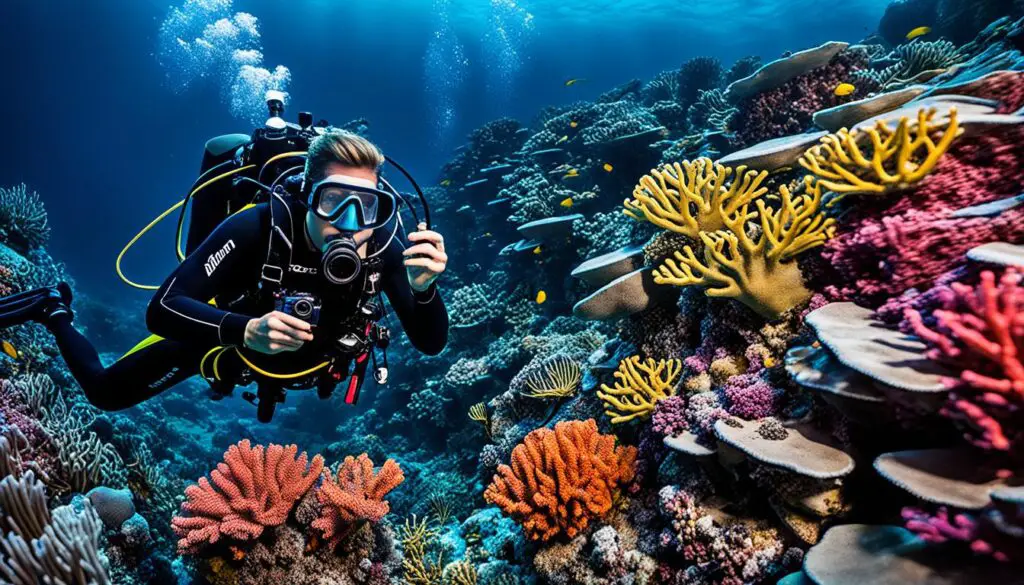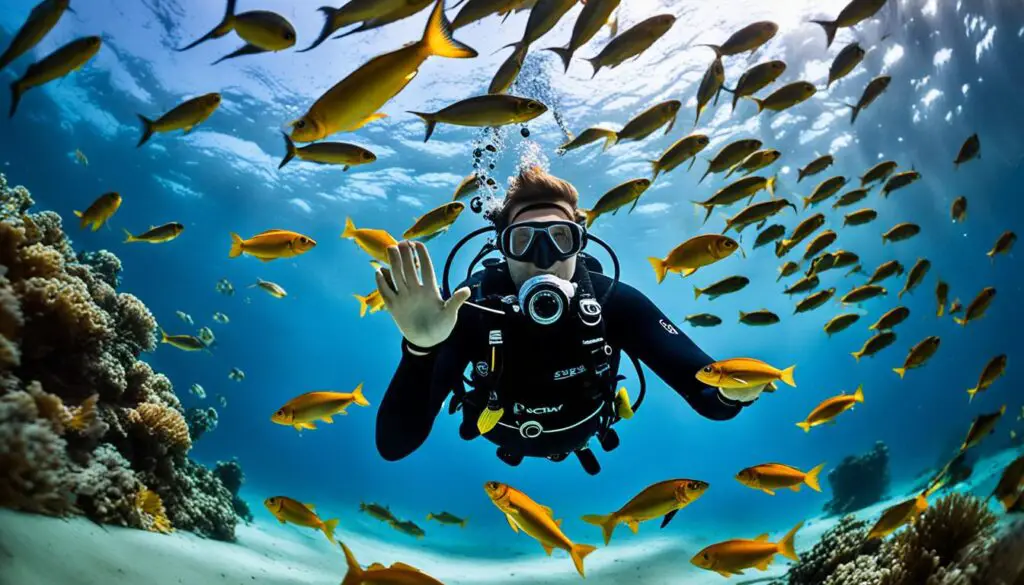Underwater video editing is a unique and challenging process that requires specialized techniques and skills to create cinematic footage. Whether you’re a professional filmmaker or an enthusiast capturing your underwater adventures, here are some essential tips to enhance your video production.
Key Takeaways:
- Choose the right equipment specifically designed for underwater use.
- Invest in a quality underwater housing to protect your camera.
- Consider using accessories like underwater lights or filters to enhance your footage.
- Master stability techniques to capture smooth shots underwater.
- Experiment with different angles and perspectives to add depth to your footage.
Choosing the Right Equipment for Underwater Video Shooting
When shooting underwater videos, it’s crucial to choose the right equipment. Look for cameras specifically designed for underwater use and invest in a quality underwater housing to protect your camera from water damage.
There are several reputable brands that offer a wide range of underwater video equipment suitable for different budgets and skill levels. Some popular camera brands for underwater filming include GoPro, Sony, and Canon. These cameras are not only waterproof but also equipped with features that optimize video quality in aquatic environments.

In addition to a reliable camera, consider using accessories to enhance your underwater footage. Underwater lights are essential for illuminating the vibrant colors and details hidden beneath the water’s surface. These lights come in various sizes and intensities, allowing you to adjust the lighting according to your needs.
Filters are another valuable accessory for underwater videography. They help correct color imbalances caused by the water’s absorption of certain wavelengths, resulting in more accurate and vivid colors in your footage. Filters are available in different types, such as red filters for tropical waters or green filters for green-water environments.
“Choosing the right equipment is the foundation of great underwater video shooting. Invest in quality gear to capture stunning footage and bring your underwater adventures to life.” – Experienced Underwater Videographer
Mastering Underwater Filming Techniques
Underwater filming requires a mastery of specific techniques to capture high-quality footage that showcases the mesmerizing beauty of the underwater world. To elevate your underwater video production, here are some essential techniques to practice:
Capturing underwater footage:
- Practice maintaining stability underwater by using a steady hand or underwater stabilizing equipment to minimize shakiness and blurriness in your shots.
- Experiment with different angles and perspectives to add depth and interest to your footage. Try shooting from below, above, or alongside your subjects to create unique and dynamic shots.
Understanding light underwater:
- Recognize that light behaves differently underwater compared to on land. Water absorbs and scatters light, resulting in reduced visibility and altered colors.
- Adjust your camera settings to compensate for the change in light conditions. Use manual white balance to restore natural colors and prevent your footage from appearing too blue or green.
By implementing these techniques, you can enhance the quality of your underwater videos and capture breathtaking footage that immerses viewers in the underwater world.

Practice maintaining stability, experiment with different angles, and understand how light behaves underwater to master the art of capturing stunning underwater footage.
Post-Production Tips for Underwater Video Editing
Now that you have captured your stunning underwater footage, it’s time to dive into the post-production process and take your video to the next level. With a few essential tips and techniques, you can enhance the visual impact of your footage and create a truly mesmerizing underwater experience.
The first step in post-production is to organize your footage and select the best clips to tell your story effectively. As you review your material, pay attention to details like composition, lighting, and the overall flow of your shots. This will ensure that you have a solid foundation to work with.
Next, utilize color correction tools to restore the natural colors and clarity that can be distorted by underwater conditions. By adjusting the color temperature, saturation, and contrast, you can bring back the vibrant hues and make your footage come alive. This step is crucial to achieve a cinematic look and maintain the true essence of the underwater world.
To add that extra touch of magic, experiment with underwater effects like bubbles or light rays. These effects can help create an immersive atmosphere and transport viewers into the captivating depths of the ocean. Be mindful not to overdo it, as subtlety is key in maintaining a realistic and engaging visual experience.
By following these post-production tips and techniques, you can transform your raw underwater footage into a polished and captivating masterpiece. Remember, editing underwater footage requires attention to detail and a creative eye. With practice and experimentation, you’ll develop your unique style and create videos that truly immerse your audience in the wonders of the underwater world.
FAQ
What is underwater video editing?
Underwater video editing is the process of enhancing and refining footage captured underwater to create cinematic videos.
What equipment do I need for shooting underwater videos?
To shoot underwater videos, you’ll need a camera specifically designed for underwater use and a quality underwater housing to protect your camera from water damage. Consider using accessories like underwater lights or filters to enhance the colors and clarity of your footage.
What techniques should I master for underwater filming?
To capture high-quality footage underwater, practice maintaining stability by using a steady hand or underwater stabilizing equipment. Experiment with different angles and perspectives to add depth and interest to your shots. It’s also important to understand how light behaves underwater and adjust your settings accordingly.
How can I enhance my underwater videos during post-production?
In post-production, start by organizing your footage and selecting the best clips. Use color correction tools to restore the natural colors and clarity of underwater footage, as water can distort colors. Experiment with underwater effects like bubbles or light rays to create a mesmerizing underwater atmosphere.
